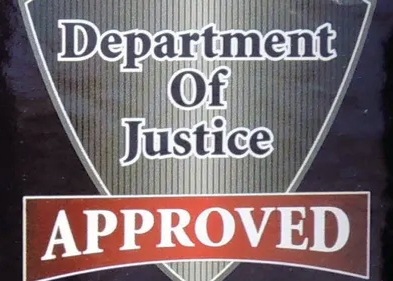
FREE SHIPPING
*On Orders Over $250We Call Within 48 Business Hours to Confirm Order
FREE SHIPPING
*On Orders Over $250We Call Within 48 Business Hours to Confirm Order

The California Department of Justice (CA-DOJ) Safe Standard isn’t really a safe rating. It’s a safe that has been constructed or tested to meet or exceed the specified standard.
In order to legally own a gun in California, that gun must be secured in a safe meeting or exceeding the requirements set forth by the California Department of Justice (CA-DOJ) Safe Regulations. Safes that meet these regulatory standards will often have a CA-DOJ label and/or reference the standard in their product literature.
The approved safe must be purchased in conjunction with the firearm or the buyer must demonstrate the purchase of a DOJ-approved safe 30 days prior to taking possession of the firearm by presenting the device to the firearms dealer and providing the firearms dealer with a receipt showing the purchase date and model name of the device.

To buy a safe that meets the CA-DOJ Safe Standard, you need to buy one of the following.

California approved safes will have either a DOJ decal indicating it is CA-DOJ approved (See What are the CA-DOJ Safe Standards), a decal indicating it has at least an UL RSC burglary rating, or built with at least the following specifications.
Any safe that meets the following, also meets the CA-DOJ requirement:
This last method allows consumers to know if their safe is legally allowed to store guns, regardless if the safe has been approved by the CDOJ or not.

If a safe being sold in California, doesn’t meet the requirements, it can still be sold there, but for gun safes, it must have a warning label attached to it:
“Warning: This gun safe does not meet the safety standards for gun safes specified in California Penal Code Section 12088.2. It does not satisfy the requirements in California Penal Code Section 12088.1, which mandates that all firearms sold in California be accompanied by a firearms safety device or proof of ownership, as required by law, of a gun safe that meets the Section 12088.2 minimum safety standards developed by the California Attorney General.”
Failure to comply can result in civil fines and, if the seller is also a licensed firearm dealer, they can lose their license and be permanently banned from selling in the future.
Testing done by the state takes place at a Certified Firearm Safety Devices (FSD) Laboratory. This isn’t a complete summary of all steps, but it will give you a general idea. If you are familiar with the UL RSC testing standards (see Safe Burglary Ratings Explained), you may recognize similarities.
The test begins by putting a small handgun, loaded and primed, inside the safe (referred to as a “box”), or if it’s a long gun safe, both a small handgun and a long gun.
They make attempts to pick any lock with paperclips and small screwdrivers for 2 minutes. Combination locks get attempts at manipulating them open for 2 minutes (the tester performing these are supposed to have no specialized training or lock-picking skills, such as a locksmith). If it can be opened, the safe fails.
The shock test involves dropping a 1 kg weight from 1 meter, 5 times, aligned to hit the key cylinder or combination lock, using a screwdriver type tool for the weight to land upon. If the lock is disabled, the safe fails. Following this test, another attempt is made using a long screwdriver to open the safe, and if the lock fails, it fails the test.
Then they try to dislodge the plug from the lock cylinder using drilling techniques. It’s not a test of the lock’s resistance to the drill, only a test to see if the plug cylinder can be pulled. If the cylinder can be pulled, it fails.
For smaller safes (75 lbs or less, or smaller than a combined L x W x H of 110 cubic inches), they also do a drop test, from 1 meter high, both with the lock facing up and with the lock facing down. This test can fail 2 ways; either the FSD itself can fail (open) OR if the firearm inside discharges.
If any of tests fail, it is considered a failure of the complete test.
The CDOJ testing standards change occasionally, but safes that have already met the standards are not retested with the new standards (they are ‘grandfathered in’).
There are a lot of other rules and regulations in California regarding the sale, possession, and storage requirements for guns, and part of purchasing a firearm there is demonstrating that you have a FSD to safely store your firearms, so if you should purchase a safe for this purpose, be sure to save your receipt from that purchase.
See all of our safes that meet the CA-DOJ standards.
Disclaimer: Though we believe the above to be an accurate interpretation of safe regulations in the state of California and is not a substitute for them nor is it to be considered as legal advice in any way. We encourage you to view the California Firearm Safety Site